-
Pick up from the adkey Limited
To pick up today
-
Courier delivery
Our courier will deliver to the specified address
2-3 Days
-
DHL Courier delivery
DHL courier will deliver to the specified address
2-3 Days


Transforming the way brands communicate. From massive outdoor billboards to sleek indoor signs, LED boards offer vibrant colors and high visibility. This guide will explore the key elements of effective LED board design, crucial for capturing attention and driving engagement.
Sale_coupon_15
1,675.00৳ Original price was: 1,675.00৳ .975.00৳ Current price is: 975.00৳ .This price is applicable for minimum 25 per square feet.
To pick up today
Our courier will deliver to the specified address
2-3 Days
DHL courier will deliver to the specified address
2-3 Days
Payment Methods:
LED displays are transforming the way brands communicate. From massive outdoor billboards to sleek indoor signs, LED boards offer vibrant colors and high visibility. This guide will explore the key elements of effective LED board design, crucial for capturing attention and driving engagement.
The LED display market is booming. Recent reports show a compound annual growth rate (CAGR) of over 10%, driven by innovations in screen technology and increased demand across various industries. Many businesses are investing in LED displays for advertising, advertising events, and even informational purposes. More companies are seeking visually appealing solutions that capture consumer attention quickly.
A well-designed LED board does more than display information; it enhances your brand. Effective design grabs attention, informs viewers, and promotes engagement. Studies show that viewers remember visual content much better than text alone. This is why high-quality LED boards can significantly improve brand recognition and customer interaction.
In this guide, we’ll cover essential design elements, including:
There are several types of LED technologies:
Each type has its pros and cons based on the application, making it essential to choose wisely.
Pixel pitch refers to the distance between LED pixels. Smaller pixel pitches create higher resolutions. Consider:
Brightness is measured in nits. Common brightness levels include:
Understanding the viewing angle will also impact design. Wider viewing angles ensure the display is legible from various positions.
Colors play a critical role in branding. Use your brand palette to create consistency. Bright, contrasting colors work well for visibility, while subtle tones can convey sophistication. Consider:
Choose fonts that are easy to read at a distance. Sans-serif fonts like Helvetica or Arial usually work best. Aim for:
Using animations can attract attention. Simple movements are more effective than complex animations. Consider using:
Regularly update content to keep it fresh. Use a content calendar to plan posts, ensuring timely relevancy for promotions and events.
Using remote management systems allows for quick updates across multiple locations. This flexibility helps businesses adjust their advertising strategy in real-time.
Select a cabinet that fits your design needs. Consider size, environment, and goal of the display. Discuss mounting options, as different settings require different approaches.
Ensure your LED board has a reliable power supply. Plan the cabling to avoid clutter and maintain safety standards.
Hiring professionals for installation can prevent future issues. Regular maintenance checks ensure everything operates smoothly, extending the display’s lifespan.
An LED board consists of a carrier material equipped with electronic elements and LEDs. In addition, there is a tinned copper surface for the solder connection. The shapes of the boards can be completely different. They can be a cluster, a strip, a ribbon or a square matrix.
A glass-fiber reinforced carrier made of epoxy is present in rigid PCBs. These boards are characterized by their rigidity and therefore cannot be bent. Their advantage is that they can therefore be processed well, as they stay well in the desired layers during processing. Their disadvantage, however, is that the length of each is limited.
In contrast to rigid blanks, flexible blanks are often made of a rather thin epoxy material. Their advantage is that they can be soldered together to form a very large unit. Aluminum core PCBs, as the name suggests, are mounted on a sturdy aluminum carrier. They are very heat efficient and are often used in high-power LEDs.
The cost of LED boards can vary greatly depending on size and resolution. Features such as brightness, weather resistance, and advanced technology will also affect the price.
To calculate ROI, consider how the display increases foot traffic and sales. Regular assessments can help understand its impact on business success.
Plan for potential repairs and maintenance costs. Having a budget for these unexpected expenses can help keep your display running smoothly.
Effective LED board design can elevate your brand and enhance engagement. Focus on key elements like technology selection, visual aesthetics, and content strategy.
Acrylic Letters, Acrylic name plate, Design of Sign Board, Digital Billboard, Educational Name Plate, Frontlet Logo Sign, Front lit sign board, Frosted glass paper price in Bangladesh, Interior Design, LED Board Sign, LED Light Sign Board, LED Signboard, Name plate, Name plate design, Name plate design for office, Name plate design for office door, Name plate designer, Name plate for home, Name plate for office desk, Name plate shop near me, Name plates for office, Neon Sign BD, Office name plate design, Office name plate design template, Sign Board, Sign Board Company, Sign board designs, Sign Board Shop, Signage Design, Signboard
As technology evolves, expect advancements in LED displays. Innovations like AI-driven content management and energy-efficient designs are on the horizon.
Shop our collection of LED sign boards for versatile and eye-catching digital displays. Ideal for outdoor advertising, car displays, design
Start by assessing your needs. Choose the right technology, plan your content strategy, and prepare for installation and maintenance. This preparation will ensure your LED board performs at its best for years to come.
In stock
In stock
In stock
In stock
In stock
In stock
No account yet?
Create an Account
Reviews
Clear filtersThere are no reviews yet.